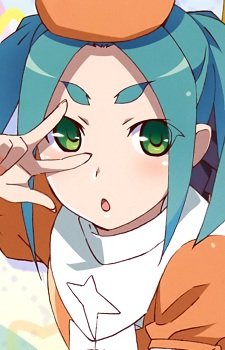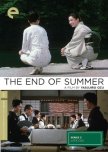"I'm happy as I am"
Ozu's 2nd to last film, The End of Summer, starts off with a sign of changing times. We see neon lights in the nightlife of a city (Osaka it seems). One of the earliest scenes is in a posh cocktail bar. Despite these signs of 'modern' times at the time of the film (1961), Ozu brings us back to much of the classic or traditional cues his stories are primarily based in. The film takes place in classic looking towns with traditional style homes and clothing.
With the End of Summer, we are treated to variations of Ozu themes yet again. Setsuko Hara plays the lead in Akiko, which was also the name of her character in the previous Ozu film, Late Autumn, but it is a different Akiko. There's another character in End of Summer, named Noriko, but it is not played by Setsuko. Ozu must have had a blast with vanilla characters and repeated names. It's as if he was saying it doesn't matter who the character is - their name, their role, their relationship - because what he wanted us to see was the common denominator of all these characters - the humanness.
Ozu films have this interesting juxtaposition of similar characters, plots (family themes), and storytelling mechanics. But the setting changes as the times change. It doesn't matter if we start off with silent films, then move on to black and white, then to color, or that it is pre-WWII or post WWII, or whatever else has changed in the external world; no, it doesn't matter because being human remains the same regardless of country, era, and place. Did neanderthals keep secrets from one another? I'd wager they did.
The similarity of Setsuko Hara's Ozu roles is not by mistake. She is not a one-note actress. Ozu purposefully keeps her character roles and temperaments limited. Hara's character Akiko, says "I'm happy as I am". It's a summary of all of Setsuko's Ozu characters. It's as if the character/Ozu are saying, "Let me stay this way in a world that is constantly changing; let me hold on to this beautiful moment, savor myself - my life- as it is right now; what more could I ask for in this life?". However, change indeed happens to us all, and keeping that happy moment forever with the accompaniments, companions, and scenes of that moment are impossible.
The music in this film was more experimental and versatile. It opens up with a Baroque music aesthetic. It certainly caught my attention more in this film compared to other Ozu soundtracks. However, some of the music is a bit jarring or doesn't quite fit the ambiance.
This film was solid, but it wasn't as emotionally impactful as other Ozu films. Many of the support roles felt insignificant or less compelling compared to other Ozu film characters. This film, while very visually stimulating, felt a bit tiresome in terms of plot and character development. There wasn't quite enough variation to Setsuko's role in this film and her character came across a bit bland. Still, it is a worthwhile film to watch for the veteran Ozu filmgoer.
With the End of Summer, we are treated to variations of Ozu themes yet again. Setsuko Hara plays the lead in Akiko, which was also the name of her character in the previous Ozu film, Late Autumn, but it is a different Akiko. There's another character in End of Summer, named Noriko, but it is not played by Setsuko. Ozu must have had a blast with vanilla characters and repeated names. It's as if he was saying it doesn't matter who the character is - their name, their role, their relationship - because what he wanted us to see was the common denominator of all these characters - the humanness.
Ozu films have this interesting juxtaposition of similar characters, plots (family themes), and storytelling mechanics. But the setting changes as the times change. It doesn't matter if we start off with silent films, then move on to black and white, then to color, or that it is pre-WWII or post WWII, or whatever else has changed in the external world; no, it doesn't matter because being human remains the same regardless of country, era, and place. Did neanderthals keep secrets from one another? I'd wager they did.
The similarity of Setsuko Hara's Ozu roles is not by mistake. She is not a one-note actress. Ozu purposefully keeps her character roles and temperaments limited. Hara's character Akiko, says "I'm happy as I am". It's a summary of all of Setsuko's Ozu characters. It's as if the character/Ozu are saying, "Let me stay this way in a world that is constantly changing; let me hold on to this beautiful moment, savor myself - my life- as it is right now; what more could I ask for in this life?". However, change indeed happens to us all, and keeping that happy moment forever with the accompaniments, companions, and scenes of that moment are impossible.
The music in this film was more experimental and versatile. It opens up with a Baroque music aesthetic. It certainly caught my attention more in this film compared to other Ozu soundtracks. However, some of the music is a bit jarring or doesn't quite fit the ambiance.
This film was solid, but it wasn't as emotionally impactful as other Ozu films. Many of the support roles felt insignificant or less compelling compared to other Ozu film characters. This film, while very visually stimulating, felt a bit tiresome in terms of plot and character development. There wasn't quite enough variation to Setsuko's role in this film and her character came across a bit bland. Still, it is a worthwhile film to watch for the veteran Ozu filmgoer.
Vond je deze recentie nuttig?







